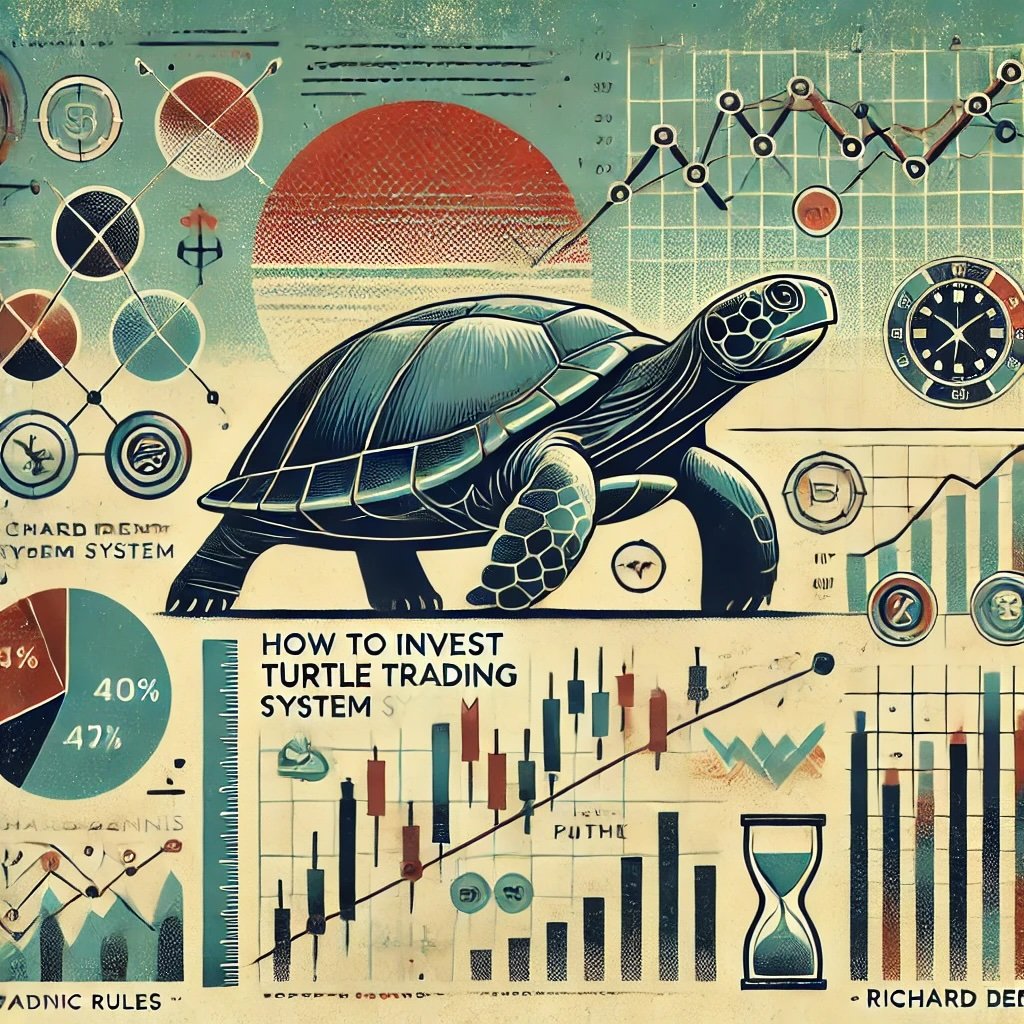Considering that market cap weighted stocks and aggregate bond strategies form the bulk of investor portfolios, we’re seeing the Achilles heel of this strategy in 2022 on full display given current pesky and persistent inflation.
Having exposure to only two asset classes (equities and bonds) and only one strategy (market-beta) leaves investor’s portfolios vulnerable to stagflationary and deflationary bust economic regimes.
The dire need for uncorrelated alternative investing strategies (such as merger arbitrage and long-short equities) to help position portfolios as more regime-ready and robust could never be greater.
Fortunately, we’re thrilled to welcome Julian Klymochko (as part of our ‘Investing Legends‘ series) to discuss portfolio solutions that help carve out an alternative sleeve.

Julian, as the founder and CEO/CIO of Accelerate Shares, provides Canadian investors with numerous alternative investment strategies available as ETFs.
One of my favourite multi-strategy alternative funds they offer (ONEC.TO) has already been reviewed as a dedicated blog post (Accelerate OneChoice ETF).
Given we could go down numerous rabbit holes with this interview, I think it would be wise to key in on two specific strategies Julian is an expert at in particular.
Merger Arbitrage.
Long-short Equities.
Accelerate offers an Arbitrage Fund (ARB.TO) targeting SPAC and Merger Arbitrage and two long/short equity strategies with different mandates (HDGE.TO and ATSX.TO) as part of its ETF roster.
Given Julian’s expertise and experience with both merger arbitrage and long-short equity strategies, I know we’re going to learn a lot from this interview.
Without further ado, let’s turn things over to Julian.

Hey guys! Here is the part where I mention I’m a travel vlogger! This “Investing Legends” interview is entirely for entertainment purposes only. There could be considerable errors in the data I gathered. This is not financial advice. Do your own due diligence and research. Consult with a financial advisor.
Merger Arbitrage + Long-Short Equities Strategies

These asset allocation ideas and model portfolios presented herein are purely for entertainment purposes only. This is NOT investment advice. These models are hypothetical and are intended to provide general information about potential ways to organize a portfolio based on theoretical scenarios and assumptions. They do not take into account the investment objectives, financial situation/goals, risk tolerance and/or specific needs of any particular individual.
Long-Short Equity Strategies

Q1) Thanks for joining us Julian!
We’re seeing the full monty of struggles that 60/40 market beta portfolios are experiencing in 2022.
One strategy that offers significant downside protection and is uncorrelated to both stocks and bonds is long-short equity solutions.
Can you help define what is a long/short equity strategy and specifically touch upon how they’re designed to maximize the upside of markets while limiting the downside risk?
A1) Long-short equity is a type of alternative investment strategy known as absolute return.
It is designed to have low / no correlation to the equity index, meaning it may perform irrespective of equity market direction.
At its most basic, long-short equity seeks to be long equities that will outperform and short equities that will underperform.
The long portfolio is expected to capture upside participation while the short portfolio is expected to limit downside risk.
In addition, a short portfolio allows a portfolio manager to leverage their long portfolio without incorporating more beta into the book.
Long-short equity can be implemented from a discretionary standpoint (human stock picking) or quantitative (computer-driven factor investing), both focused on capitalizing on pricing inefficiencies.

Long-Short Equity = Portfolio Diversification
Q2) Let’s zone in on long/short equity strategies from a portfolio diversification standpoint.
One of the key aspects of long/short investing is that managers buy stocks that are expected to outperform the market whereas they short equities they figure will underperform.
Firstly, how does this process improve the diversification of a portfolio and secondly what specific factors/fundamentals are you seeking for both the “long” and “short” sides of the equation?
A2) Long-short equity seeks to improve diversification of a portfolio given theoretically it exhibits low or zero correlation to traditional asset classes.
The inclusion of an uncorrelated investment strategy with a forecast positive rate of return will improve the risk-adjusted return of a portfolio.
We implement long-short equity from a quantitative standpoint, know as multifactor long-short investing or colloquially referred to as alternative risk premia.
Specifically, if one considers the value factor, one would be long undervalued securities while being short overvalued securities.
In this trade, a portfolio manager would expect, on average, that undervalued securities would outperform overvalued securities.
Source: YouTube on Khan Academy channel (The investment performance results presented here are based on historical backtesting and are hypothetical. Past performance, whether actual or indicated by historical tests of strategies, is not indicative of future results. The results obtained through backtesting are only theoretical and are provided for informational purposes to illustrate investment strategies under certain conditions and scenarios.)

Long-Short Equity Driving Excess Returns
Q3) One of the most exciting aspects of long/short equity strategies is the potential to drive excess returns relative to long-only mandates.
With the potential to capture both rising (long) and falling prices (short) what is the most ideal circumstance for a long/short strategy to thrive?
Conversely, when will a long/short stock exposure strategy frustrate investors and possibly underperform long-only equities?
A3) Ultimately, long-short equity is a bet that market inefficiencies will be corrected, such as overvalued “glamour” stocks falling to their fundamental intrinsic value.
In general, the correction of inefficient pricing is how the market functions.
However, in certain environments, long-short multifactor investing can perform the opposite as it is expected to, meaning overvalued stocks may become even more overvalued.
For example, this happened in 2020 as record central bank stimulus heavily distorted markets, causing highly speculative stocks to outperform markedly.

Different Long-Short Equity Strategies
Q4) One of the more confusing aspects of long/short equity strategies, for DIYer investors, is that the gross and net exposure varies depending on the specific goals of the fund.
There are funds with an aggressive active extensions approach (roughly net 100%), moderate hedging mandates (roughly net 60 to 80%) and purely defensive market neutral (roughly net 0 to 20%).
Can you help distinguish between the three different long/short equity strategies and what the pros and cons are of each?
A4) The most important aspect for an investor to consider is gross and net positioning.
Both of these characteristics will have a substantial effect on both strategy beta and volatility.
Ultimately, an investor should seek beta and volatility metrics in line with their expectations.
A higher beta long-short equity strategy is more directional in nature, while a low-beta market neutral strategy should move completely independent of the market.
The strategy’s volatility and risk level will be driven by its gross exposure.
Ultimately, it is up to the allocator to decide what beta and volatility metrics they are seeking given their risk and return expectations.
Source: YouTube on Meb Faber Show

Asset Allocation Towards Alternative Investments
Q5) Assuming an investor with a Milquetoast 60/40 portfolio is now keen on diversifying (by adding long/short equities) as part of a dedicated alternative sleeve, what are some ideas for how they can implement this strategy in terms of a target allocation?
What would be a token exposure to the strategy versus a more all-in conviction approach?
A5) I think a good framework for a more diversified portfolio, without straying too far from the 60/40 that allocators know and love, is the 50/30/20 portfolio.
The 50/30/20 portfolio includes 50% equities, 30% fixed income and a 20% diversified sleeve of alternative investment strategies.
Long-short equity would be an allocation within the 20% alternatives sleeve.
We tend to see this long-short equity allocation at approximately 3-5%.
Source: YouTube on channel Accelerate Financial Technologies Inc.

Merger Arbitrage Investment Strategy
Q6) Merger Arbitrage investing is one of the more exciting alternative investing strategies I’ve been learning about lately.
Considering, it is not likely as commonly well-known as other alternatives, I thought we could start off by defining both SPAC Arbitrage and Merger Arbitrage.
A6) SPAC Arbitrage is an investment strategy that seeks to acquire shares or units of a special purpose acquisition company (“SPAC”) at or below its net asset value (“NAV”) in order to generate a return through either:
– an exit at a premium to NAV once the SPAC announces a business combination
– an exit at NAV, being the IPO price plus accrued interest, through a redemption before the deal vote or through the liquidation of the SPAC
Merger Arbitrage is an investment strategy that capitalizes on the spread between a company’s current share price and the consideration paid for its acquisition in light of an announced merger transaction.
The merger risk premium— or the spread between the acquisition price and the trading price of a stock—compensates the arbitrageur for the risk of the acquisition failing to close.
The merger arbitrageur’s goal is to “lock in” the spread earned upon deal closing and to profit from buying a takeover stock at a discount to its acquisition price.
Source: YouTube on Meb Faber Show

Merger Arbitrage = Low Volatility + Attractive Yields
Q7) One of the investing objectives of a Merger Arbitrage strategy is to provide consistent yet low volatility returns alongside attractive yields.
What specifically about Merger arbitrage allows for this strategy to manage volatility and provide attractive yields at the same time?
A7) Arbitrage is a strategy designed to generate returns irrespective of market direction, given the trades are driven by hard catalysts (i.e. a deal closing) and not market fluctuations.
This catalyst-driven investing, with low duration, is a key tenet of merger arbitrage.

Merger Arbitrage Tips For Investors
Q8) As an ‘event driven’ investing strategy that seeks to take advantage of mispricing what are some tips and recommendations for those seeking to become better arbitrage investors?
What type of a skillset is required by an investor/expert seeking to analyzing corporate actions in an advantageous manner?

A8) Warren Buffett once said, “Give a man a fish and you will feed him for a day. Teach a man to arbitrage and you will feed him forever”.
Arbitrage is a skill, like any other activity, and skills get developed through practice.
The best thing an investor can do to become a better arbitrageur is to study and practice the strategy.
It requires dedication as it is a full-time endeavour.
The main characteristics of a successful arbitrageur include: low emotion, high analytical ability, attention to detail, commitment to performance, and a passion for investing.

Fit Merger Arbitrage into a Portfolio
Q9) How does a SPAC/Merger Arbitrage investing strategy integrate into a portfolio with alternative sleeve space (small allocation vs a significant allocation)?
Additionally, what can investors expect in terms of a potential long-term return/risk profile moving forward?
A9) Arbitrage is generally a low-risk strategy, given its beta and volatility are typically quite low.
Therefore, we typically see arbitrage allocations in the 5-10% of a diversified asset allocation framework.
Investors can expect a 6-8% annualized return with low risk, or a single-digit volatility, from arbitrage over the long term.

Adventure Travel Abroad
Q10) Thanks so much for sharing your time and expertise with us Julian!
This is after-all an investing website run by a travel vlogger, so let’s finish off with a bit of fun.
What is one bucket-list travel experience you’d like to have in the near future?
Where would you go and what would you do?
A10) Heli-snowboarding in Alaska or Japan would be epic.

Connect With Julian On Social Media
Where/how can people connect with you on social media and other platforms to stay in touch?
Follow me on Twitter: @JulianKlymochko
Important Information
Comprehensive Investment Disclaimer:
All content provided on this website (including but not limited to portfolio ideas, fund analyses, investment strategies, commentary on market conditions, and discussions regarding leverage) is strictly for educational, informational, and illustrative purposes only. The information does not constitute financial, investment, tax, accounting, or legal advice. Opinions, strategies, and ideas presented herein represent personal perspectives, are based on independent research and publicly available information, and do not necessarily reflect the views or official positions of any third-party organizations, institutions, or affiliates.
Investing in financial markets inherently carries substantial risks, including but not limited to market volatility, economic uncertainties, geopolitical developments, and liquidity risks. You must be fully aware that there is always the potential for partial or total loss of your principal investment. Additionally, the use of leverage or leveraged financial products significantly increases risk exposure by amplifying both potential gains and potential losses, and thus is not appropriate or advisable for all investors. Using leverage may result in losing more than your initial invested capital, incurring margin calls, experiencing substantial interest costs, or suffering severe financial distress.
Past performance indicators, including historical data, backtesting results, and hypothetical scenarios, should never be viewed as guarantees or reliable predictions of future performance. Any examples provided are purely hypothetical and intended only for illustration purposes. Performance benchmarks, such as market indexes mentioned on this site, are theoretical and are not directly investable. While diligent efforts are made to provide accurate and current information, “Picture Perfect Portfolios” does not warrant, represent, or guarantee the accuracy, completeness, or timeliness of any information provided. Errors, inaccuracies, or outdated information may exist.
Users of this website are strongly encouraged to independently verify all information, conduct comprehensive research and due diligence, and engage with qualified financial, investment, tax, or legal professionals before making any investment or financial decisions. The responsibility for making informed investment decisions rests entirely with the individual. “Picture Perfect Portfolios” explicitly disclaims all liability for any direct, indirect, incidental, special, consequential, or other losses or damages incurred, financial or otherwise, arising out of reliance upon, or use of, any content or information presented on this website.
By accessing, reading, and utilizing the content on this website, you expressly acknowledge, understand, accept, and agree to abide by these terms and conditions. Please consult the full and detailed disclaimer available elsewhere on this website for further clarification and additional important disclosures. Read the complete disclaimer here.






